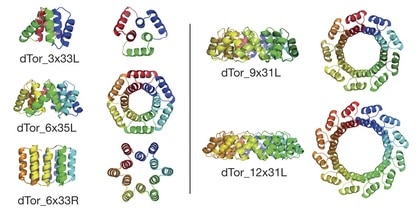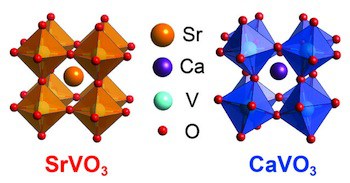Computational design of proteins satisfying predetermined geometric constraints produced stable proteins with the designed structure that are not found in nature.
Rational design of protein architectures not found in nature


Computational design of proteins satisfying predetermined geometric constraints produced stable proteins with the designed structure that are not found in nature.

A fully automated design protocol generates dozens of designs for proteins based on helix-loop-helix-loop repeat units that are very stable, have crystal structures that match the design, have very different overall shapes, and are unrelated to any natural protein.

Prof. William Goddard presented four advances from his research group that enable going from first principles quantum mechanics calculations to realistic nanosystems of interest with millions or billions of atoms.

Prof. Gerhard Klimeck described the success of nanoHUB.org, a science and engineering gateway providing online simulations through a web browser for nanotechnology research and education.

DNA building blocks mimic biological ion channels to more precisely control which molecules can cross a biological membrane.

A molecular robotic arm synthesized from small synthetic organic molecules uses cyclic changes in pH and other reaction conditions to grab and release a cargo molecule, and swing the cargo back and forth between the two ends of the molecular platform.

The positions of 3769 tungsten atoms in a tungsten needle segment were determined to a precision of 19 pm (0.019 nm), including the position of a single atom defect in the interior of the sample, by using aberration-corrected scanning transmission electron microscopy and computerized tomography.

In the first mouse model of the progressive form of multiple sclerosis, nanoparticles that created immune tolerance to myelin prevented the development of progressive MS.

Highly correlated electron motions resembling electron liquids rather than electron gases, and found in some transition metal oxides, may enable inexpensive substitution for expensive displays.

Electrochemically modifying individual metallic nanoparticles and pairs of such nanoparticles enabled reversible tuning of their optical properties, including charge transfer plasmon formation in nanoparticle pairs.